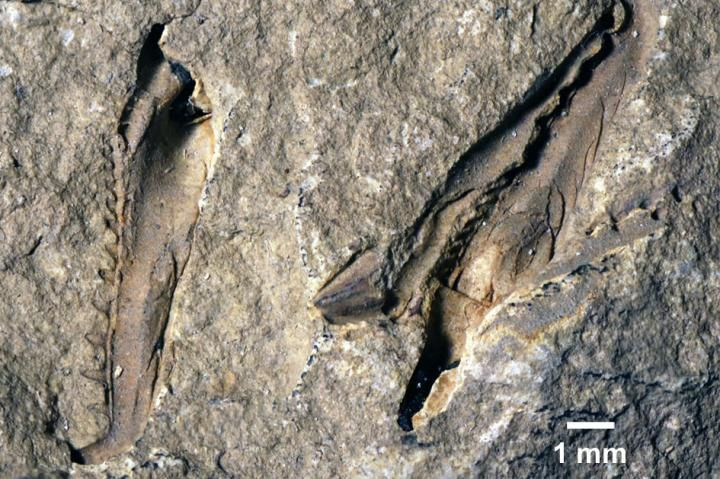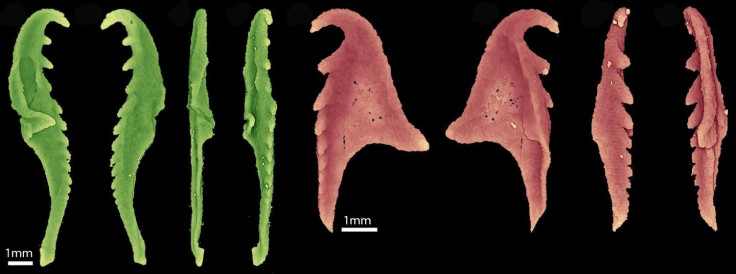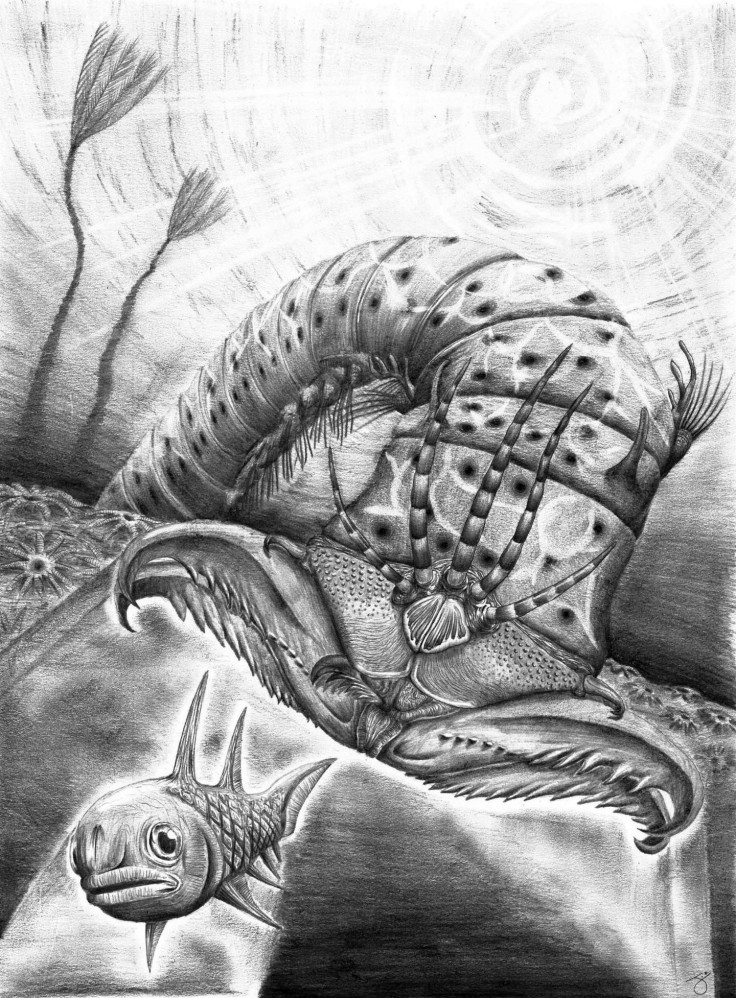Gigantic Worm With Snapping Jaws Lived 400 Million Years Ago

While truly large animals are not so common on land any more — most of them having been killed off by modern humans — a much bigger number of large species still thrived in the world’s oceans. But gigantism, or growing to really large sizes, was a common trait in the past since size was an obvious advantage.
While dinosaurs exemplified that gigantism like nothing before or after them, it was an evolutionary characteristic found across many life forms, including worms. And a newly discovered fossil of a worm that lived in the Devonian period, about 400 million years ago, shows that its body grew in excess of a meter in length, and it had a terrifying large (relatively speaking, of course) mouth that was over a centimeter long.
Named Websteroprion armstrongi, the species stands out among fossil worms because of its jaws that are visible to the naked eye, whereas microscopes are usually needed to see them in most other worm species. W. armstrongi is currently known only through its jaws, and the body length is extrapolated on the basis of its size. It was described in a study published Tuesday in the journal Scientific Reports.
The fossils were found in June 1994 by Derek K. Armstrong of Ontario Geological Survey, who was dropped by helicopter to investigate the rocks and fossils at a remote and temporary exposure in Ontario, Canada, for a few hours. They had been stored at the Royal Ontario Museum since, and were only noticed by the study’s authors.

Lead author Mats Eriksson from Lund University, Sweden, said in a statement: “Gigantism in animals is an alluring and ecologically important trait, usually associated with advantages and competitive dominance. It is, however, a poorly understood phenomenon among marine worms and has never before been demonstrated in a fossil species.”
Among living worm species, W. armstrongi is comparable to Eunice aphroditois, commonly known as the Bobbit worm. This “giant eunicid” species, found mostly in the warmer waters of the Atlantic and Indo-Pacific oceans, can grow up to 3 meters in some cases and have mouths with sharp teeth. Combined with the speed of their ambush attacks, E. aphroditois has been sometimes known to slice its prey in half.

Co-author Luke Parry from the School of Earth Sciences in the University of Bristol, United Kingdom, said in the statement: “It also shows that gigantism in jaw-bearing polychaetes was restricted to one particular evolutionary clade within the Eunicida and has evolved many times in different species.”
The name Websteroprion armstrongi pays tribute to Armstrong, who discovered the fossils, as well as to Alex Webster, bassist for the death metal band Cannibal Corpse. According to the authors — they include David Rudkin from the Royal Ontario Museum — who are all hobby musicians, Webster can be considered a “giant” when it comes to playing the bass guitar.
© Copyright IBTimes 2024. All rights reserved.





















